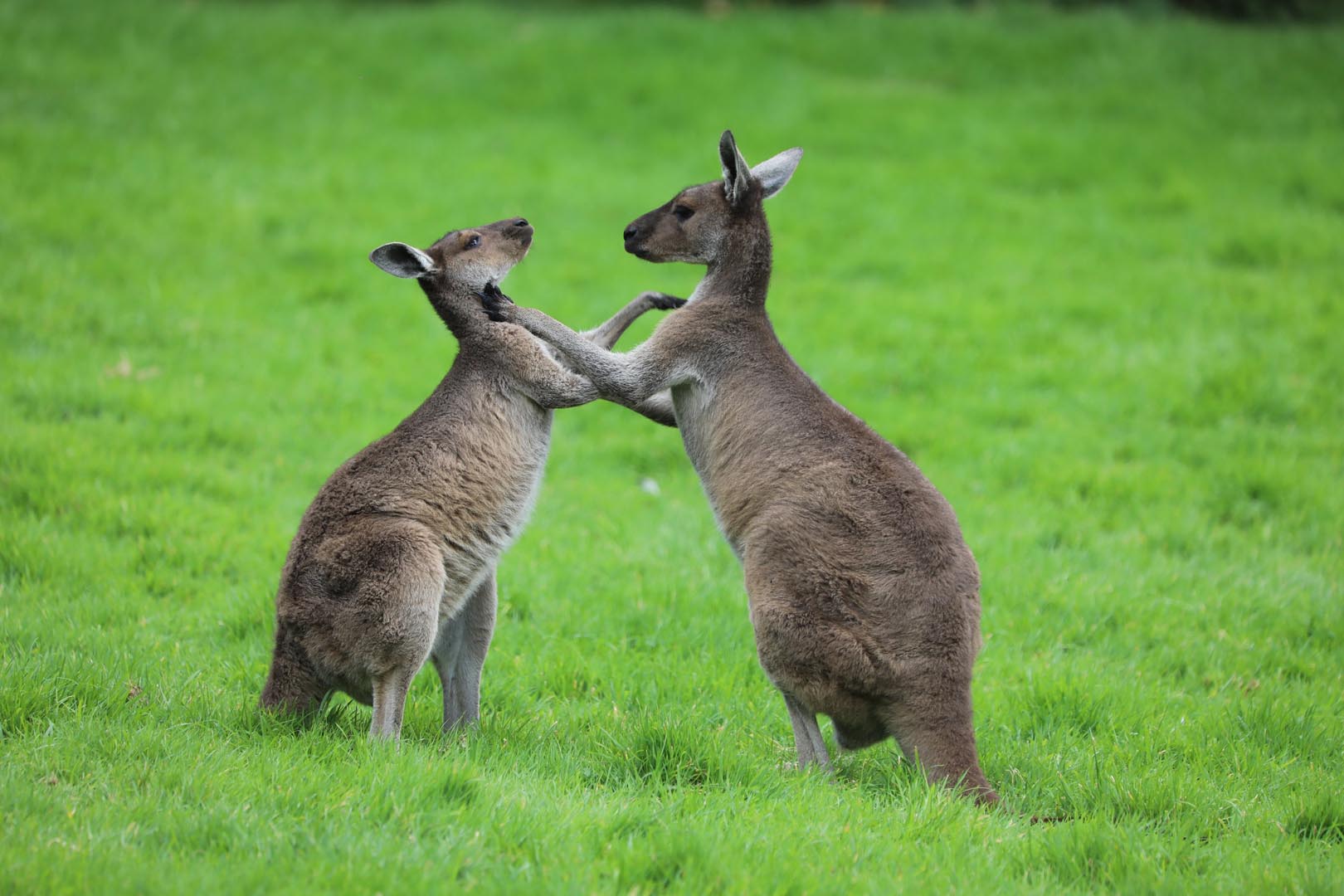Western grey kangaroo
Macropus fuliginosus melanops

At Edinburgh Zoo, we are home to four western grey kangaroos. They are two females called Mia and Rebel and two males called Ricciardo and Donovan.
Western grey kangaroos are one of the largest and most common species of kangaroo. They have grey-brown fur, a powerful tail and strong hind legs that let them hop long distances at high speeds.
Adult males can weigh up to 54 kg and females up to 35 kg. They stand over 1.3 meters tall. They live in open woodlands, grasslands and shrublands.
They are social animals, usually living in groups called mobs, which help protect them from predators. They communicate through thumping, grunting and body postures.
Population
Increasing
IUCN August 2018
Diet
Herbivore
Habitat
Desert
Fact file
They have an ankle adaptation which prevents the foot rotating sideways, so that kangaroos cannot twist their ankles while hopping
They are most active from late afternoon to early morning, resting during the day in the shelter of trees and shrubs
Females carry their young, called joeys, in a pouch for several months until they are ready to explore the outside world

How we're helping
Like all the animals in our care, our kangaroos are amazing ambassadors for their relatives in the wild and help hundreds of thousands of people connect with nature every year. They encourage visitors to learn about the threats facing wildlife and the action they can take to help create a world where nature is protected, valued, and loved.
As a wildlife conservation charity, we care for the animals here at the zoo and work to protect species at risk around the world. From providing expertise in genetics and veterinary health, to protecting wild places with local conservation partners, and even restoring threatened species to the wild, we are active where we are needed most.
Find out more about RZSS conservation
